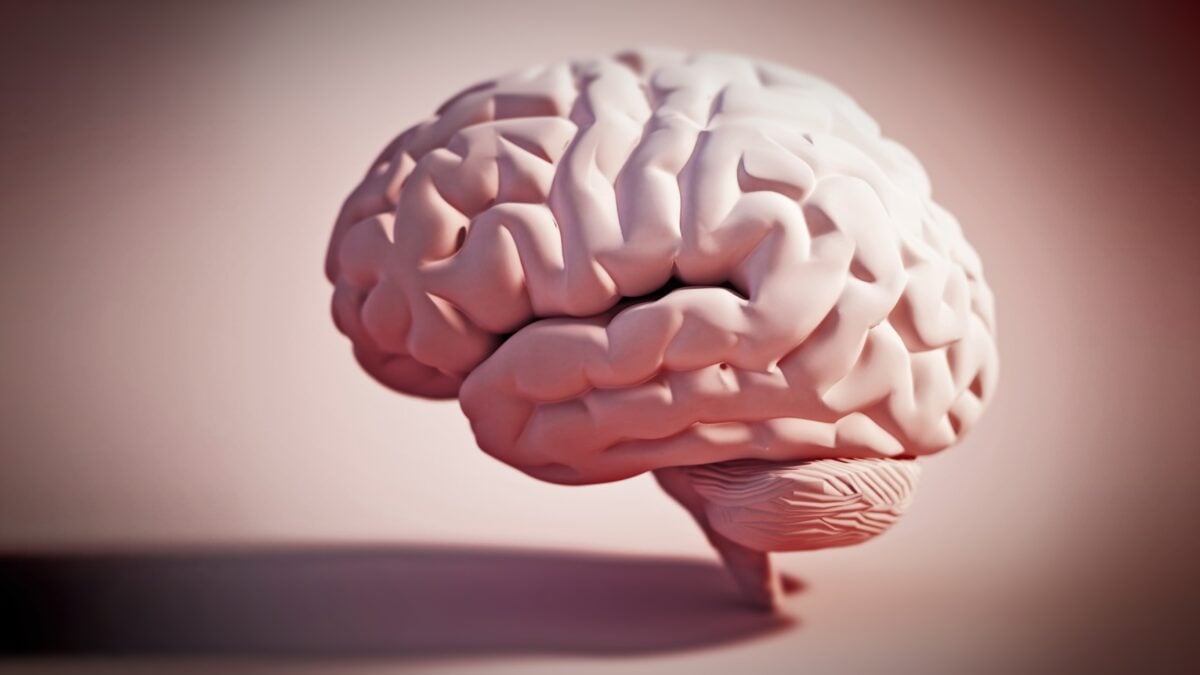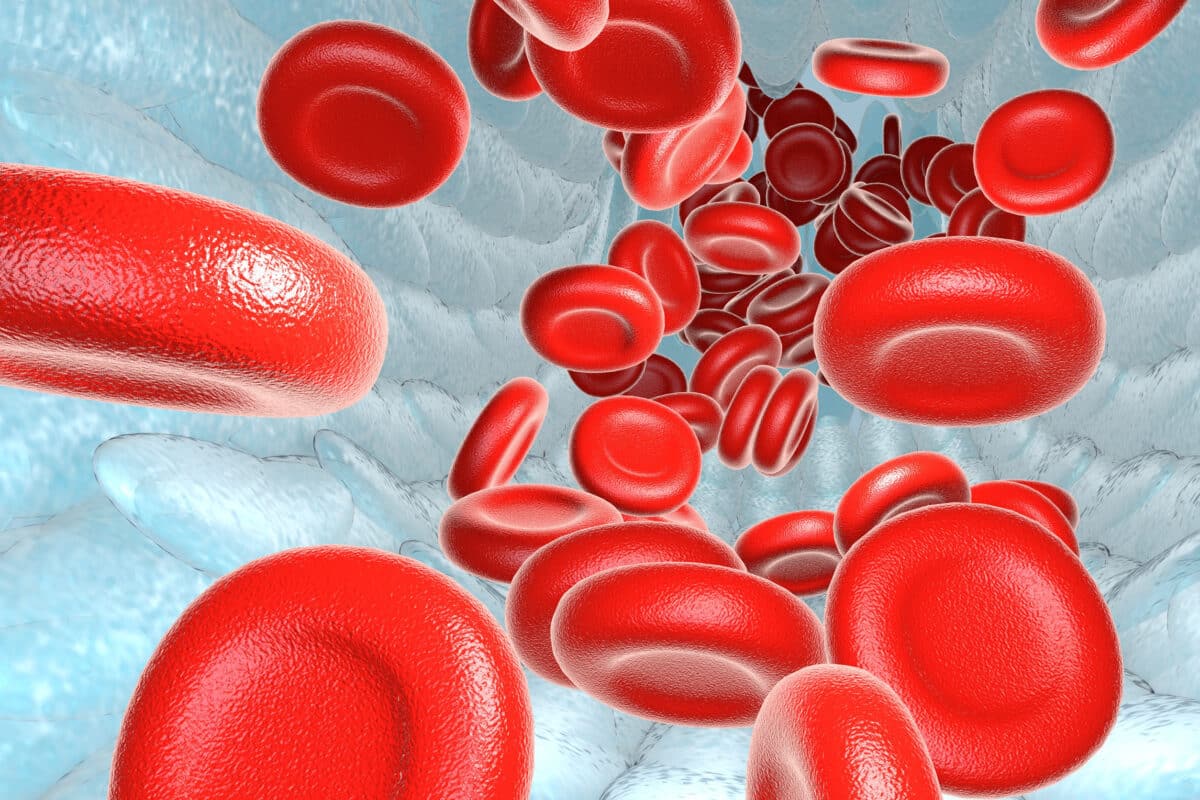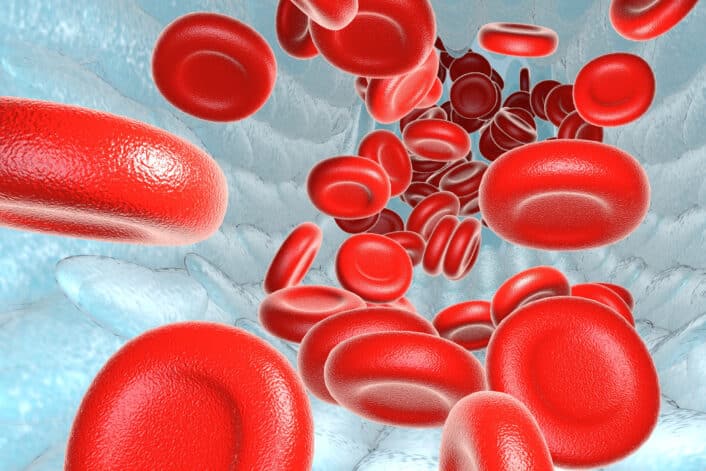Genetics of MUTYH-Associated Polyposis (MAP): Do Your Genes Put You More at Risk of Cancer?
Jess
on
September 1, 2024

Disclaimer: This article is for informational purposes only and is not intended to diagnose any conditions. LifeDNA does not provide diagnostic services for any conditions mentioned in this or any other article.
Colorectal cancer remains one of the most common cancers worldwide, with millions affected each year. Among the various genetic factors linked to this disease, one less familiar but significant contributor is MUTYH-Associated Polyposis (MAP).
Individuals with MAP have a heightened risk of developing colorectal cancer due to mutations in the MUTYH gene, which plays a crucial role in DNA repair. By unraveling the connections between genetics and this condition, we can better understand the importance of genetic testing, early detection, and personalized prevention strategies for those at risk.
How Do Cancers Develop?
Cancer develops when cells in the body grow uncontrollably, bypassing the normal checks and balances that regulate cell division and repair. This process begins when genetic mutations alter the DNA inside cells, disrupting the signals that tell cells when to grow, divide, or die.
Normally, cells with damaged DNA either repair themselves or undergo programmed cell death (apoptosis). However, in cancer, these safety mechanisms fail, allowing mutated cells to survive, multiply, and form tumors.
Genetics plays a significant role in this process. Some individuals inherit mutations in key genes, like tumor suppressor genes (e.g., BRCA1, TP53) or DNA repair genes (e.g., MUTYH), which increases their predisposition to developing cancer.
Environmental factors, such as exposure to carcinogens (e.g., tobacco smoke, UV radiation), poor diet, and chronic inflammation, can also trigger genetic changes in cells, compounding the risk.
Over time, the accumulation of these mutations can lead to a malignant tumor capable of invading nearby tissues and spreading to other parts of the body (metastasis).
Understanding how genetics influence cancer development can empower individuals to make informed lifestyle choices, pursue early detection, and consider genetic testing if they have a family history of cancer.
What is Colorectal Cancer?
Colorectal cancer is a type of cancer that begins in the colon or rectum, parts of the large intestine. It usually starts as small, non-cancerous clumps of cells known as polyps, which can grow on the inner lining of the colon or rectum.
Over time, some of these polyps can develop into cancer. The risk of colorectal cancer increases with age, but genetics and lifestyle factors also play a significant role in its development.
In terms of genetics, inherited mutations in certain genes can increase the likelihood of developing colorectal cancer. For example, conditions like MUTYH-Associated Polyposis (MAP) and Lynch syndrome are linked to genetic mutations that impair the body’s ability to repair DNA damage.
These inherited genetic changes can lead to the development of cancer earlier in life. People with a family history of colorectal cancer may benefit from genetic testing to assess their risk.
About 0.7% of all colorectal cancers are due to MAP while Lynch syndrome, the most common hereditary colorectal cancer, is responsible for 2–4% of all colorectal cancer cases.
Environmental and lifestyle factors, such as a diet high in processed meats, a sedentary lifestyle, smoking, and heavy alcohol use, also contribute to colorectal cancer risk. Inflammation from conditions like ulcerative colitis or Crohn’s disease further increases the likelihood of developing this cancer.
By understanding how genetics and lifestyle choices influence colorectal cancer risk, individuals can make informed decisions about their health, including adopting preventive measures like a balanced diet, regular exercise, and undergoing appropriate screenings. Early detection and personalized prevention strategies are key to managing the risk of colorectal cancer.
What is the MUTYH Gene?
The MUTYH gene, located on chromosome 1, is crucial for maintaining genomic stability. It encodes a DNA glycosylase enzyme responsible for repairing oxidative DNA damage. Specifically, the MUTYH protein plays a key role in the base excision repair (BER) pathway, which corrects mutations that can occur due to environmental factors or normal cellular processes.
When the MUTYH gene is functioning properly, it identifies and removes incorrectly paired adenine bases that have been oxidatively damaged, preventing these errors from being incorporated into new DNA strands during replication.
However, mutations in the MUTYH gene can impair this repair mechanism, leading to an accumulation of DNA damage. This accumulation increases the risk of developing colorectal cancer and other tumors, particularly through the condition known as MUTYH-Associated Polyposis.
What is MUTYH-Associated Polyposis (MAP)?
MAP is a hereditary condition that increases the risk of developing colorectal cancer due to mutations in the MUTYH gene. The MUTYH gene is responsible for producing a protein that helps repair DNA damage caused by oxidative stress. When this gene is mutated, the body’s ability to correct DNA errors is impaired, leading to the formation of multiple polyps in the colon and rectum, which can eventually turn cancerous.
MAP is an autosomal recessive condition, meaning a person must inherit two copies of the mutated MUTYH gene — one from each parent — to be affected. Individuals with just one copy of the mutation are carriers but typically do not develop the condition themselves. People with MAP often develop dozens to hundreds of polyps in their colon, usually starting in their 30s or 40s, and have a significantly higher lifetime risk of colorectal cancer compared to the general population.
Regular screenings, such as colonoscopies, are crucial for individuals with MAP because early detection and removal of polyps can prevent them from becoming cancerous. Genetic testing is recommended for those with a family history of colorectal cancer or multiple polyps to determine if they carry the MUTYH mutation.
Although MAP is primarily linked to colorectal cancer, studies suggest it may also slightly increase the risk of other cancers, such as stomach or ovarian cancer. Understanding the genetic underpinnings of MAP allows individuals to take proactive measures, including personalized monitoring and lifestyle modifications, to manage their risk effectively.
By being aware of their genetic predisposition, individuals can better protect their health and make informed decisions about their long-term well-being.
What Can Affect the Development of MUTYH-Associated Polyposis?
While the primary cause of MAP is mutations in the MUTYH gene, several factors can influence its development and progression. Understanding these factors is crucial for individuals with a genetic predisposition to this condition.
Genetic Mutations
The most direct influence on the development of MAP is the presence of mutations in the MUTYH gene. MAP is inherited in an autosomal recessive pattern, meaning a person must inherit two mutated copies of the gene—one from each parent—to manifest the condition.
Carriers of a single mutated gene do not typically show symptoms but can pass the mutation to their offspring. Genetic testing can identify individuals who carry these mutations, allowing for informed decision-making regarding surveillance and management.
Family History
A family history of colorectal cancer or polyps can increase the likelihood of developing MAP. Individuals with relatives who have been diagnosed with MAP or other hereditary syndromes should consider genetic counseling and testing. Understanding family history can provide critical insights into risk factors and lead to earlier surveillance measures.
Environmental Factors
While MAP is primarily genetic, environmental influences can affect disease onset and progression. Factors such as diet, physical activity, and exposure to carcinogens can play a role. For example, a diet high in processed meats and low in fiber has been linked to an increased risk of colorectal cancer. In contrast, a diet rich in fruits, vegetables, and whole grains may help mitigate some risks associated with polyp development.
Lifestyle Choices
Certain lifestyle choices can exacerbate the risk associated with MAP. Smoking and excessive alcohol consumption have both been linked to an increased risk of colorectal cancer.
Regular physical activity is associated with a lower risk of colorectal cancer, and maintaining a healthy weight can further support overall well-being. Adopting healthier habits can be especially important for individuals with MAP, as it may help reduce the risk of cancer development.
Chronic Inflammation
Chronic inflammatory conditions, such as inflammatory bowel disease (IBD), can increase the risk of developing colorectal cancer in individuals with MAP. IBD leads to prolonged inflammation in the gastrointestinal tract, which may contribute to DNA damage and the subsequent development of polyps. Individuals with MAP who also have IBD should be closely monitored due to the compounded risk of colorectal cancer.
Age and Gender
Age is a significant risk factor for the development of colorectal cancer in general. Individuals with MAP typically start developing polyps as early as in their 30s or 40s, and the risk of cancer increases with age. Additionally, some studies suggest that men may have a slightly higher risk of developing colorectal cancer than women, although both genders are significantly affected by MAP.
Access to Healthcare
Access to regular medical care and screenings can greatly affect the outcomes for individuals with MAP. Early detection through regular colonoscopies is essential for identifying and removing polyps before they can develop into cancer.
Those with limited access to healthcare may miss critical screening opportunities, increasing their risk of complications associated with MAP.
While the primary driver of MAP is genetic mutations, various factors can influence the condition’s development and progression.
Understanding these factors, including family history, lifestyle choices, and environmental influences, can empower individuals to take proactive measures for their health. Regular screenings, genetic counseling, and informed lifestyle choices are vital in managing the risks associated with MAP and enhancing overall well-being.
Can MUTYH-Associated Polyposis Be Cured?
MAP currently does not have a definitive cure, as it is a genetic condition resulting from mutations in the MUTYH gene. However, effective management strategies can significantly reduce the risk of colorectal cancer associated with this condition.
Individuals diagnosed with MAP typically undergo regular surveillance through colonoscopies, starting at an early age, to monitor and remove polyps before they develop into cancer.
Genetic counseling is also recommended for individuals and families affected by MAP to understand their risk and explore options for family planning. While MAP cannot be cured, proactive management and early intervention can significantly enhance the quality of life and survival of those impacted by this genetic condition.
What are the Symptoms of MUTYH-Associated Polyposis?
MAP is characterized by the development of multiple polyps in the colon and rectum, which can lead to various symptoms, particularly as the condition progresses.
Awareness of these symptoms is essential for early detection and management. Here are the key symptoms associated with MAP:
- Abdominal Pain or Discomfort: Individuals with MAP may experience intermittent abdominal pain or discomfort. This can be due to the presence of polyps, which can cause blockages or irritations in the gastrointestinal tract.
- Changes in Bowel Habits: Changes in bowel habits, such as diarrhea, constipation, or alternating between the two, are common symptoms. These changes may occur due to the presence of polyps affecting bowel movement patterns.
- Rectal Bleeding: Blood in the stool or rectal bleeding is a concerning symptom that should prompt immediate medical evaluation. This may occur due to polyps or more serious complications, such as colorectal cancer.
- Unexplained Weight Loss: Unexplained weight loss can be a symptom of advanced disease. If an individual is losing weight without trying, it may indicate underlying health issues, including the presence of cancer.
- Anemia: Chronic bleeding from polyps can lead to anemia, characterized by fatigue, weakness, and pale skin. This occurs when the body lacks enough healthy red blood cells to carry adequate oxygen to tissues.
- Nausea or Vomiting: Some individuals may experience nausea or vomiting, particularly if there is a blockage in the intestines due to a large polyp.
- Intestinal Obstruction: In severe cases, the presence of numerous polyps can lead to intestinal obstruction, resulting in severe abdominal pain, bloating, and inability to pass gas or stool.
While these symptoms can indicate MUTYH-Associated Polyposis, they are not exclusive to this condition and may be caused by other gastrointestinal issues.
Individuals with a family history of colorectal cancer or multiple polyps should consult healthcare professionals for genetic testing and appropriate screenings. Early detection and intervention are crucial in managing MAP and reducing the risk of complications, including colorectal cancer.
Treatments for MUTYH-Associated Polyposis
While there is currently no cure for MAP, several effective treatments and management strategies can help reduce the risk of cancer and maintain overall health. Here are some of the primary treatment options for individuals with MAP:
Regular Surveillance and Screening
One of the most critical components of managing MAP is regular surveillance through colonoscopies. Individuals diagnosed with MAP are typically advised to begin screening at a younger age than the general population, often around 25 to 30 years old, or 5 to 10 years earlier than the age at which a family member was diagnosed with colorectal cancer.
Colonoscopies allow for the early detection and removal of polyps before they can develop into cancer. Depending on the number and size of polyps, colonoscopy frequency may range from every one to three years.
Polyp Removal
During colonoscopy, healthcare providers can remove polyps through a procedure known as polypectomy. This is a crucial preventive measure that significantly reduces the risk of cancer by eliminating potential precursors to malignancy. The removal of polyps should be performed promptly to prevent their growth and any associated complications.
Surgical Options
In cases where numerous polyps are present or when colorectal cancer is diagnosed, surgical intervention may be necessary. The most common surgical procedure is a colectomy, which involves the partial or complete removal of the colon.
- Partial Colectomy: This procedure removes the affected section of the colon while preserving the rest. It may be recommended if cancer is localized or if there are too many polyps in a specific area.
- Total Colectomy: This is a more extensive procedure that involves the complete removal of the colon. It is often recommended for individuals with a high number of polyps or those diagnosed with cancer. A total colectomy can significantly reduce the risk of future colorectal cancers but may require the creation of an ileostomy (a stoma on the abdominal wall for waste elimination).
Medications
While there are no specific medications that cure MAP, certain drugs may help manage symptoms or reduce polyp formation. Some studies suggest that nonsteroidal anti-inflammatory drugs (NSAIDs), such as aspirin, may help reduce the risk of colorectal cancer in individuals with familial adenomatous polyposis and potentially in those with MAP. However, patients should consult their healthcare provider before starting any medication.
Genetic Counseling and Testing
Genetic counseling is a vital resource for individuals with MAP and their families. Counselors can provide information about inheritance patterns, the implications of genetic testing, and the risks associated with MAP. Families can also benefit from genetic testing to identify individuals at risk, enabling informed decisions regarding screening and prevention strategies.
Lifestyle Modifications
Adopting a healthy lifestyle can support overall well-being and may help reduce cancer risk. Recommendations include:
- Diet: A diet rich in fruits, vegetables, and whole grains, and low in red and processed meats, can be beneficial. Some studies suggest that a high-fiber diet may reduce the risk of colorectal cancer.
- Exercise: Regular physical activity has been associated with a lower risk of colorectal cancer and can help maintain a healthy weight.
- Avoiding Tobacco and Limiting Alcohol: Smoking and excessive alcohol consumption are both linked to an increased risk of colorectal cancer. Individuals with MAP should avoid tobacco products and limit alcohol intake.
While MUTYH-Associated Polyposis does not have a cure, effective management strategies can significantly reduce the risk of colorectal cancer and enhance quality of life. Regular screenings, polyp removal, potential surgical interventions, and lifestyle modifications play crucial roles in the care of individuals with MAP.
Genetic counseling and testing can further empower families to understand their risks and make informed health decisions. By staying proactive and informed, individuals with MAP can navigate their health journeys more effectively.
References
- https://my.clevelandclinic.org/health/diseases/17254-mutyh-associated-polyposis-map
- https://www.cancer.gov/about-cancer/understanding/what-is-cancer
- https://www.cancer.gov/publications/dictionaries/cancer-terms/def/apoptosis
- https://www.ncbi.nlm.nih.gov/books/NBK532243/
- https://www.cancer.gov/publications/dictionaries/cancer-terms/def/metastasis
- https://www.mayoclinic.org/diseases-conditions/colon-cancer/symptoms-causes/syc-20353669
- https://www.cdc.gov/colorectal-cancer-hereditary/about/about-lynch-syndrome.html#:~:text=Lynch%20syndrome%2C%20also%20known%20as,age%20(before%20age%2050).
- https://www.mayoclinic.org/diseases-conditions/crohns-disease/symptoms-causes/syc-20353304
- https://medlineplus.gov/genetics/gene/mutyh/
- https://www.ncbi.nlm.nih.gov/pmc/articles/PMC2691665/
- https://www.cdc.gov/genomics-and-health/about/genetic-counseling.html#:~:text=Genetic%20counseling%20gives%20you%20information,personal%20and%20family%20health%20history.
- https://www.genome.gov/genetics-glossary/Carcinogen#:~:text=Definition,exhaust%20fumes%20and%20cigarette%20smoke).
- https://www.hopkinsmedicine.org/health/treatment-tests-and-therapies/colonoscopy#:~:text=A%20colonoscopy%20is%20a%20procedure,and%20moved%20into%20your%20colon.
- https://www.cancercenter.com/risk-factors/mutyh-associated-polyps
- https://my.clevelandclinic.org/health/symptoms/14612-rectal-bleeding
- https://www.nhlbi.nih.gov/health/anemia#:~:text=Anemia%20is%20a%20condition%20that,you%20feel%20tired%20or%20weak.
- https://my.clevelandclinic.org/health/diagnostics/4949-colonoscopy
- https://www.brighamandwomens.org/medical-resources/polypectomy#:~:text=A%20polypectomy%20is%20the%20surgical,cervix%2C%20and%20the%20small%20intestines.
- https://www.mayoclinic.org/tests-procedures/colectomy/multimedia/partial-colectomy/img-20007580#:~:text=During%20a%20partial%20colectomy%2C%20a,waste%20leaves%20your%20body%20normally.
- https://www.mayoclinic.org/tests-procedures/colectomy/about/pac-20384631
- https://www.nhs.uk/conditions/nsaids/
- https://www.genome.gov/genetics-glossary/Genetic-Counseling

















